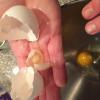September 23, 2016 - 16:53

Vivian O'Bannon
Professor Jody Cohen
Emily Balch Seminar – Changing Our Story
September 23, 2016
Play: A Method of Learning in School and Learning Life Skills
Children need to play to learn. Some need more playtime than others, some cannot function without it. Play is such an innocent and beautiful phenomenon, so people tend to criticize the in-depth scientific analyses of play; however, it is important to note the reasoning behind this research. Robert Henig’s New York Times article “Taking Play Seriously” describes a few acclaimed studies on play that examine the adaptive benefits of play and how it differs across the child population, notably among children with attention deficit hyperactivity disorder. While reading this, I was reminded of the time I spent at the Phebe Anna Thorne school towards the end of my senior year. The Thorne school centers its teaching on the benefits of play, recess, and hands-on learning. For 2 weeks, I worked with about twelve children, most of which were between ages 4 and 5. Many children had difficulty sitting still or paying attention when the teachers conducted lessons, but during play-time they submerged themselves in the activities and interacted very well with their peers. The children used their recent knowledge to direct the games in new, creative ways. For example, the children would make homes for their sea creatures but they knew to separate certain animals, as there were predators, but also prey. Other times, the children would build dinosaur restaurants with two sections: vegetarian for the herbivores, meat-eater for the carnivores. The teachers planned this type of learning in a subtle way, manipulating the types of toys that were available on the shelves during each specific unit. At the beginning of the ocean unit, children would find new toys on the shelves: plastic sea-creatures and books about the ocean. Without having studied the connections between play and education, the founders of the Thorne curriculum would not be able to provoke these amazing reactions, or at least not be aware of its impact. Therefore, it is very important to understand the benefits of researching and studying play scientifically.
In one study from the article, Jaak Panksepp pinpoints “connections among the play drive and certain human conditions” like A.D.H.D. Panksepp’s argument presented an idea that connects to my experience at the Thorne school. A.D.H.D. is a disorder that disrupts the way people focus and pay attention. Children with disorders like A.D.H.D. have trouble learning conventionally because it is hard for them to sit still and pay attention for long periods of time. If schools were more aware of the benefits of play time for children with similar disorders, the children would be able to get an enriched learning experience and benefit as do the kids who do not have a learning handicap.
Play not only enhances the way that children learn in school, but it helps them learn life skills and understand important conceptual issues. By adopting certain roles and acting them out, they learn to appreciate “grown up things”. Kismet’s post on serendip presents an example of one of these “grown up things” – a group of children pretending to deliver a baby. They take a very serious, mature situation and enact it for their own pleasure and enjoyment; by pretending to be adults, they look forward to their future, thus helping them mature. Without wanting to grow up, children would not be able to mature. At a young age, they have difficulty discerning between what they want and what is good for them, so it is fortunate that children participate in imaginative games where they want to be teachers, parents, doctors, and other adult roles. By acting out these games, they also begin to understand the severity of life’s problems. In games like cops and robbers, rich and poor, or others that involve being on opposing sides, children typically end up crying. They begin to notice the unfairness of being on one side or the other. In cops and robbers, someone ends up crying because the other side thinks that they are always right. In rich and poor, the kids pretending to be poor become frustrated, tired of being continually beaten down. Although they are not fully aware of the application to a real life problem, they know that they are upset. They feel the weight of injustice and the frustration of discrimination. After a while, they do not see the fun in the game. This form of childhood play become a preface for understanding the problems of everyday life and society, instilling sympathy that awakens once children mature enough to consciously recognize these issues.
Play has many benefits. For children with disorders, play has been shown (scientifically and observationally) to help them learn, remember, and apply their knowledge. Play helps children mature and understand serious events and conflicts that they will be faced with throughout their lives. Without reflecting on these different types of play, teachers would not realize that their students can learn by accident. Adults would not realize how important their own role-play was as a young child. Children play pretend because they want to be like their role models, and by longing to grow up, children actually mature and start to understand life through the eyes of the roles they fulfill.
